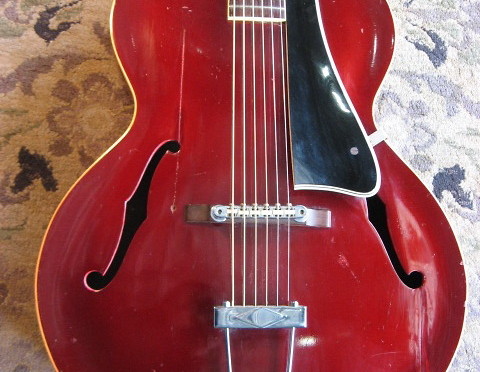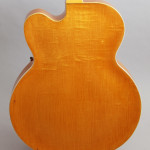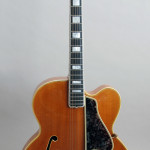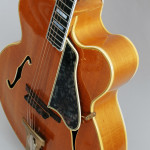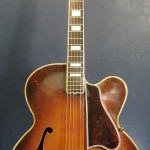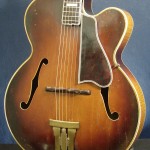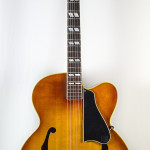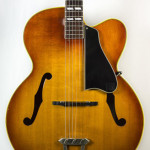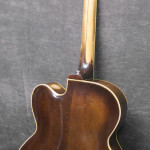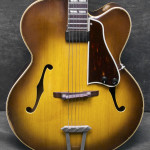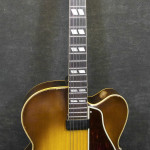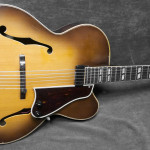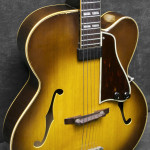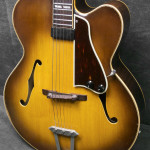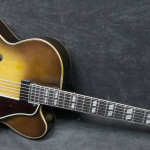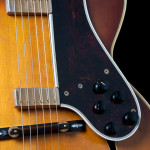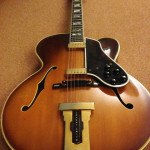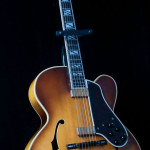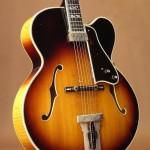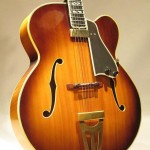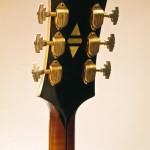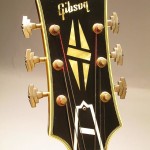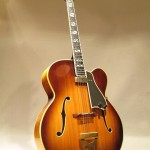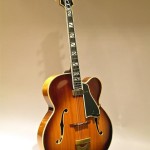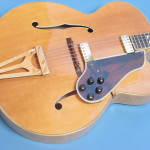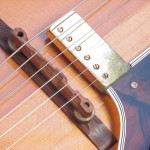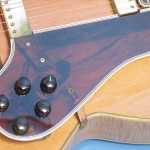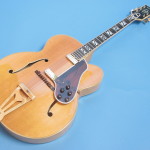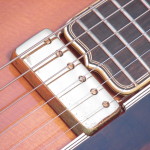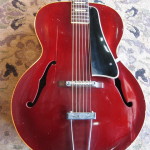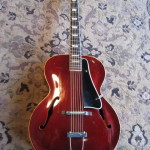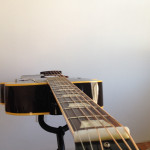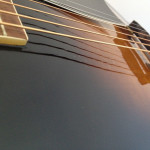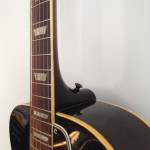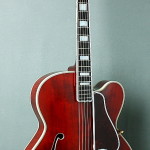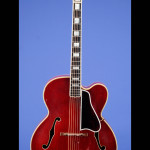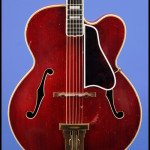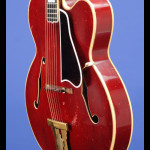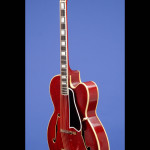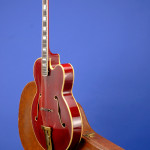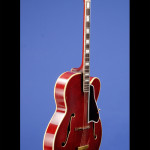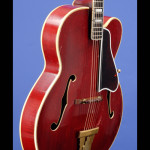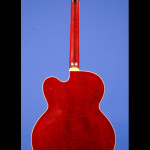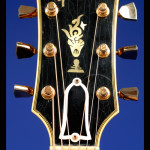Unlike most of the stuff I trawl Reverb for — gear I appreciate aesthetically but don’t want to actually own — all I want for Xmas is an acoustic archtop guitar. I’m not too picky so long as it’s gorgeous and plays well. Thus begins my descent into anal-retention and hyperbole over elderly instruments that may have served their owners best by looking nice hung on the wall since the day they were finished, much less 70 years later.
Our first stop: Gibson.
I’m no expert but after looking at several dozen of the many models the company has produced over the decades, I’ve unwittingly zeroed in on two models as my favorite “pure” acoustic [no floating pickup jazz for either, thank you] and I suspect they’re the deluxe and standard versions of the same guitar: The L-5C/L-5P and the L-7C/L-7P [for Premier, which just meant cutaway from what I can tell; they dropped the conceit after the war and went with C for cutaway]. The L-5 is the top of the line for its 17″ body size, sporting an ebony fingerboard with block inlays, bound F-holes and a spiffy fingerboard pointy bit. A binding fillip, if you will. The L-7 has a rosewood board, parallelogram inlays and a less fancy tailpiece. Both are handsome guitars that almost always look like they would play like buttah, with the L-5 looking just a bit fancier. Here’s the L-5C/P:
And here is the L-7P/C:
As clean as the lines are on the L-5, nothing looks more amazing to my eye than the Johnny Smith signature model that Gibson put out in the early ’60s. [Except maybe the George Gobel model, but good luck finding one these days.] An acoustic with a floating pickup, the Smith is essentially and L-5 with a shallower body depth — a rare knock on the L-5 is that it is on the bulky side, unless you’re a Super 400 player — and rather Art Deco split-block fingerboard inlays. The Smith was available with one or two pickups; because I’m more of a twiddler than a player, I like two pickups more.
Here’s the one-pickup model, that somehow comes off as more Art Decoish than its sibling:
If the L-5 is bulky, you can probably guess what I think of the elephantine Super 400 model — but this particular axe is gorgeous. Once again with the two floating mini-humbuckers:
A dark horse candidate for winning my gear-addled heart is the L-50, a non-cutaway, less-expensive version of the L-5, sporting trapezoidal fret markers and occasionally the deepest, most lovely red I’ve ever seen on a guitar this side of the George Gobel model.
Speaking of Gobel, behold:
A Kalamazoo-era Gibson, the L-5CT George Gobel model is a rare bird, an L-5 that’s downscaled in size but certainly not in quality. A Venetian cutaway, thin-bodied [hence the T; most examples have 2 1/4″ to 2 3/8″ deep bodies] acoustic in a consistently stunning dark-cherry red finish — reportedly the first Gibson to be finished in that color — and a short-for-an-acoustic 24 3/4″ scale neck.
The Gobel has a carved-spruce top on curly maple sides, a maple three-piece neck with an ebony fretboard and pearl block markers, nine- to five-ply black/white binding and gold-plated hardware.
Forty-five Gobels were made from late 1958 to 1962, making it easily the rarest of all of Gibson’s signature models. According to Gibson’s catalogs from that time, a stock George Gobel L-5 CT retailed for $620, approximately $4700 in 2015 dollars. It’s completely out of my budget, but I would say that the model is worth the price.
Here’s Dean Martin toting the guitar out to Gobel for a duet. It’s the kind of guitar that demands you wear a suit to play it:
